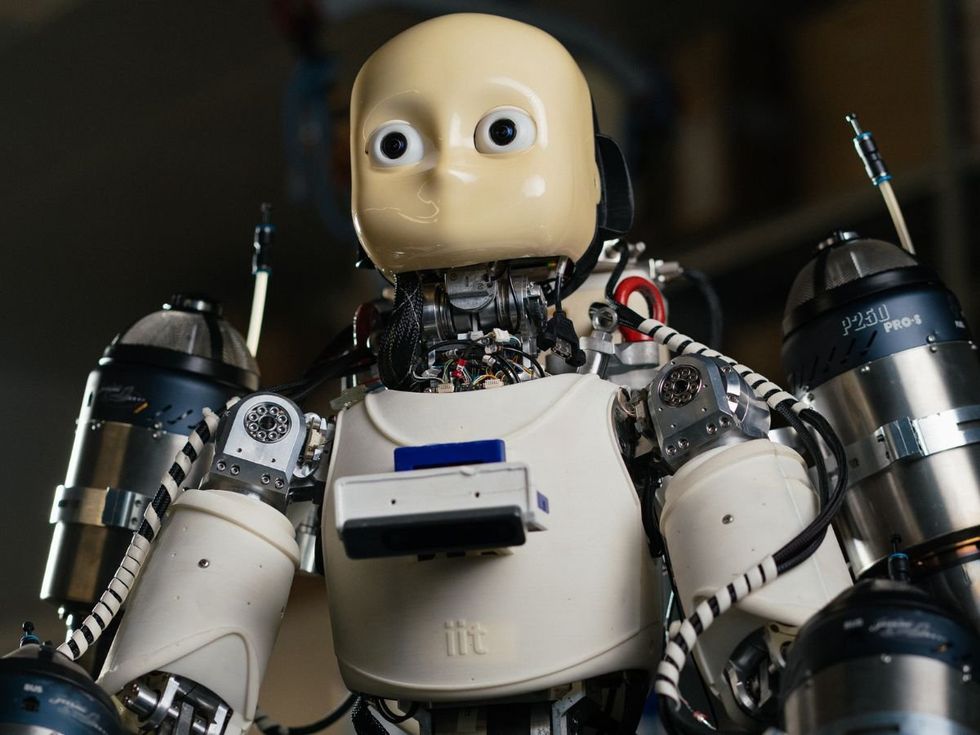A groundbreaking development in robotics has emerged from the Italian Institute of Technology (IIT) in Genoa. The research team, led by Daniele Pucci, successfully achieved the first-ever stable flight of the iRonCub robot, a prototype designed to resemble a five-year-old child. This accomplishment marks a significant milestone in the project, which began in 2017 and aims to create a flying robot capable of assisting in disaster response scenarios.
During a recent test, the iRonCub, equipped with four jet engines, lifted approximately 50 centimeters off the ground for several seconds. The long-term vision for this flying robot is to navigate complex environments during emergencies, such as floods or fires. Once it reaches the site, iRonCub would transition from flying to walking, using its limbs to clear debris and open doors effectively.
Pucci elaborated on the challenges of creating a humanoid robot capable of flight. The jet turbines generate over 1000 N of thrust, but the robot must self-regulate its movements to maintain stability, as the engines require time to adjust power levels. “What is not visible from the video,” Pucci explained, “is that the exhaust gas from the turbines is at 800 degrees Celsius and almost supersonic speed. We have to understand how to generate trajectories to avoid damaging the robot with the emission gases.”
The research team’s recent publication in Nature Engineering Communications outlines a novel approach to modeling and controlling aerodynamic forces for humanoid robots, a concept that has not been significantly explored until now. This research could have broader implications, as the algorithms developed for thrust estimation could be applied to other flying platforms, including electric vertical takeoff and landing (eVTOL) aircraft.
Beyond the immediate applications of iRonCub, Pucci highlighted the innovation stemming from this project. The team recently collaborated with an industrial company to develop a new pneumatic gripper. Unexpectedly, they discovered that the dynamics of controlling the gripper were similar to those of the jet turbines, allowing them to apply the same control techniques in an industrial setting. “That was an ‘ah-ha’ moment for us: first you do something crazy, but then you build the tools and methods, and then you can actually use those tools in an industrial scenario. That’s how to drive innovation,” Pucci said.
Future Prospects for iRonCub
The excitement surrounding the iRonCub project extends beyond its technical achievements. Pucci noted that such innovative projects are essential for attracting talent and fostering passion among students and researchers. During a visit to IIT, the vibrant atmosphere was reminiscent of events like the DARPA Robotics Challenge, where enthusiasm and engagement drive forward-thinking research.
Looking ahead, Pucci plans to enhance iRonCub with a new jetpack that will provide better yaw control and potentially integrate wings for more efficient long-distance flight. However, testing logistics are becoming increasingly complex. The current test stand, located on the roof of their building, limits further experimentation, and future tests may require coordination with Genoa Airport.
As Pucci emphasized, the vision for iRonCub transcends mere novelty. “This is not a joke. It’s something that we believe in. And that feeling of doing something exceptional, or possibly historical, is what motivates us. We’re just getting started,” he concluded, underscoring the project’s potential impact on both technology and humanitarian efforts.
